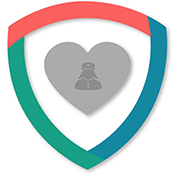 You have found the home-care provider or facility you want to help with the care of your aging loved one, but how does one pay for this? If your loved one doesn’t have long-term health insurance, things can get expensive very quickly. This government website answers the many confusing questions involved with the financial end of providing care.
You have found the home-care provider or facility you want to help with the care of your aging loved one, but how does one pay for this? If your loved one doesn’t have long-term health insurance, things can get expensive very quickly. This government website answers the many confusing questions involved with the financial end of providing care.
Included in this link is a search engine for finding facility care, home care, and just about anything else you can think of provided in this resource. The fact that it is not a private industry that receives pay for recommendations is a good way to double check on what’s available to your family to care for your loved one.
 We typically think of family caregivers as women in the Baby Boomer generation, age late 40s to late 50s. But new information from AARP and the National Alliance for Caregiving reveals that a full 10 percent of family caregivers are Millennials. That’s 10 million people!
We typically think of family caregivers as women in the Baby Boomer generation, age late 40s to late 50s. But new information from AARP and the National Alliance for Caregiving reveals that a full 10 percent of family caregivers are Millennials. That’s 10 million people!
 Most people want to be independent and do not want to be a burden on the family, hesitating to ask us for the help they need. When dealing with a family member who still has fairly strong cognitive abilities, we can only know where to provide help if we can teach our loved one to ask for help. Of course we will see some obvious areas where help is needed, but in order to provide the best possible care, we need him/her to be open with us.
Most people want to be independent and do not want to be a burden on the family, hesitating to ask us for the help they need. When dealing with a family member who still has fairly strong cognitive abilities, we can only know where to provide help if we can teach our loved one to ask for help. Of course we will see some obvious areas where help is needed, but in order to provide the best possible care, we need him/her to be open with us. In
In